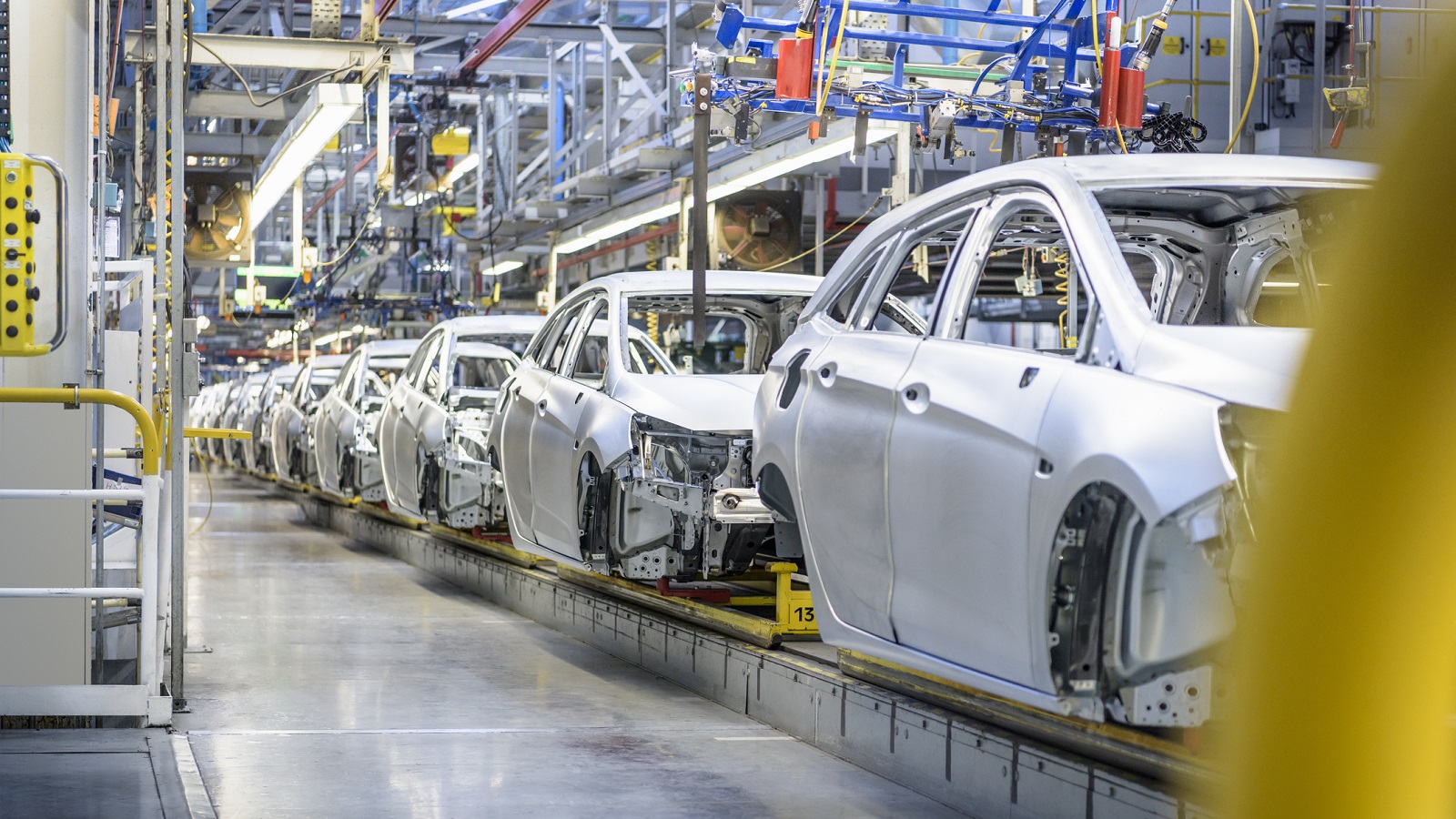Eight Innovations that Will Change Your Future
No personal jet packs at the big-box store just yet, but we foresee technological breakthroughs that will make a real difference.
Kiplinger clients have long come to rely on Kiplinger editors’ early insights into new technology and other exciting developments that eventually would make life easier and more enjoyable for all of us. Examples of "you read it in Kiplinger" include the coming of commercial air routes in 1927, the early development of television in the 1930s, electronic office machines in 1953 and mobile phones in 1983.
What will be the tech breakthroughs of the next decade? Watch the energy and transportation sectors. Here are eight forecasts pulled from the pages of The Kiplinger Letter in 2009 that look at some promising developments to come -- everything from spray-on solar cells to new ways of relieving traffic congestion. Offer your own thoughts and predictions in the reader discussion area.
See these innovations as a slide show
Think an all-electric car is out of your budget range? Maybe not. A $25,000 model from U.S. upstart Aptera Motors is close to commercial rollout. You’ll know it when you see it -- a bullet shaped three-wheeler about the size of a Toyota Prius. The range: 140 miles. Buyers have already put down deposits on the first 4,000 to come off the assembly lines. Those orders will be filled by August 2010. It’ll take a year or so longer for General Motors, Nissan and Toyota to produce plug-ins, and they’ll cost more and have shorter ranges. GM’s Chevy Volt, for example, will sell for $40,000 after rebates and will go only 40 miles per charge.

Sign up for Kiplinger’s Free E-Newsletters
Profit and prosper with the best of expert advice on investing, taxes, retirement, personal finance and more - straight to your e-mail.
Profit and prosper with the best of expert advice - straight to your e-mail.
Imagine converting motion -- from auto traffic or pedestrians -- to electricity. Tests are already under way to convert to electrical power the repeated pounding of tires on busy roads and tollbooth lanes or of commuters running to catch the subway. It could be used to run simple devices, leaving no carbon footprint. It may even be possible for joggers to use their footsteps to run cell phones and iPods. The technology could be in use in five years or so if the tests are successful.
New technologies to unsnarl traffic are on the horizon: Traffic management systems that combine video devices with computer logic will reduce collisions, reroute motorists and allow real-time adjustments to signals. They’ll be sorely needed to help ease major congestion that not only frustrates motorists but also slows business shipping and delivery.
The energy storage business will grow 10-fold over the next 20 years. A slew of promising technological developments on the horizon will both provide benefit to energy users and benefit from investment. Among them: Energy storage systems, such as flow batteries -- in effect, reverse fuel cells -- that can store unused wind and solar energy for use later when it is needed. Conventional lead-acid battery arrays will grow much bigger. And watch for a system that stores compressed air: At night, when demand is typically low, wind-made electricity would run pumps that compress air into underground caverns. In daytime, released air would turn turbines to make electricity.
Ever heard of thorium power? You will. Thorium is a naturally occurring element, slightly radioactive, that is far more common in the ground than uranium. The first nuclear reactor fueled by thorium will be built in about five years, with more to come. Thorium has a lot of practical advantages over the more commonly used uranium, and it can churn out the same amount of emission-free electricity to power the U.S. Thorium is safer, produces less waste and is abundant here in the U.S. Plus it’s less likely to cause accidents and can’t be used by terrorists for dirty bombs.
North Dakota as an oil patch state? Yes, probably in a decade or less. The state’s Three Forks-Sanish formation could rival nearby Bakken Play, a vast oil shale field. Together they could provide the equivalent of 30 years’ worth of U.S. oil needs. Oil companies are already scurrying to stake claims to the bonanza. New drilling and recovery technologies make the fields ripe for production. They sit a mile beneath the surface and, until recently, were mostly inaccessible. Though drilling has begun, big-time commercial production at Three Forks is five years away.
Space based power plants are no longer just a science fiction fantasy. Pacific Gas and Electric aims to supply 250,000 customers from one by 2016. The California utility inked a deal with Solaren Corp. for 200 megawatts of electricity -- power to be generated by an orbiting solar cell plant and transmitted as microwaves to Fresno, where it will be converted to electricity. Solaren, PowerSat, Space Energy and others working on orbital power are getting a lift from state laws requiring more use of renewable sources. And they figure they’ll have a steady customer in the Defense Department, which wants a means of getting power to troops in remote areas.
Spray-on solar cells will shake up the electricity market by 2015. University and private labs in the U.S., Australia, Switzerland and Canada are developing cost-effective plastic coatings containing microscopic particles of copper, indium, gallium and titanium. Painted on building rooftops and exteriors, they’ll absorb sunlight and produce electricity just as bulky solar panels do now. One big plus: The cell coatings could generate power even on cloudy days, making this solar catcher up to three times more efficient than today’s solar modules. That’ll give them the potential to cut a company’s electricity purchases by 50% to 75% and even offer some companies the chance to sell power to utilities when their own needs ebb.
For weekly updates on topics to improve your business decisionmaking, click here.
Get Kiplinger Today newsletter — free
Profit and prosper with the best of Kiplinger's advice on investing, taxes, retirement, personal finance and much more. Delivered daily. Enter your email in the box and click Sign Me Up.
-
 6 Stunning Waterfront Homes for Sale Around the US
6 Stunning Waterfront Homes for Sale Around the USFrom private peninsulas to lakes, bayous and beyond, Kiplinger's "Listed" series brings you another selection of dream homes for sale on the waterfront.
By Charlotte Gorbold Published
-
 Six Reasons to Disinherit Someone and How to Do It
Six Reasons to Disinherit Someone and How to Do ItWhether you're navigating a second marriage, dealing with an estranged relative or leaving your assets to charity, there are reasons to disinherit someone. Here's how.
By Donna LeValley Published
-
 What To Know if You’re in the Market for a New Car This Year
What To Know if You’re in the Market for a New Car This YearThe Kiplinger Letter Buying a new car will get a little easier, but don’t expect many deals.
By David Payne Published
-
 Will Lower Mortgage Rates Bring Relief to the Housing Market?
Will Lower Mortgage Rates Bring Relief to the Housing Market?The Kiplinger Letter As mortgage rates slowly come down here's what to expect in the housing market over the next year or so.
By Rodrigo Sermeño Published
-
 Car Prices Are Finally Coming Down
Car Prices Are Finally Coming DownThe Kiplinger Letter For the first time in years, it may be possible to snag a good deal on a new car.
By David Payne Published
-
 New Graduates Navigate a Challenging Labor Market
New Graduates Navigate a Challenging Labor MarketThe Kiplinger Letter Things are getting tough for new graduates. Job offers are drying up and the jobless rate is increasing. Are internships the answer?
By David Payne Last updated
-
 When's the Best Time to Buy a Domestic Flight? The Kiplinger Letter
When's the Best Time to Buy a Domestic Flight? The Kiplinger LetterThe Kiplinger Letter A new study by CheapAir.com has crunched the numbers.
By Sean Lengell Published
-
 Woes Continue for Banking Sector: The Kiplinger Letter
Woes Continue for Banking Sector: The Kiplinger LetterThe Kiplinger Letter Regional bank stocks were hammered recently after news of New York Community Bank’s big fourth-quarter loss.
By Rodrigo Sermeño Published
-
 Anxious Flyers Take Note: The Kiplinger Letter
Anxious Flyers Take Note: The Kiplinger LetterThe Kiplinger Letter Whether it's the routes to avoid that have the most turbulence or the safest airline, we've got you covered.
By Sean Lengell Published
-
 The Auto Industry Outlook for 2024
The Auto Industry Outlook for 2024The Kiplinger Letter Here's what to expect in the auto industry this year. If you’re in the market for a car it won’t be quite as daunting as it was during the pandemic and after.
By David Payne Published